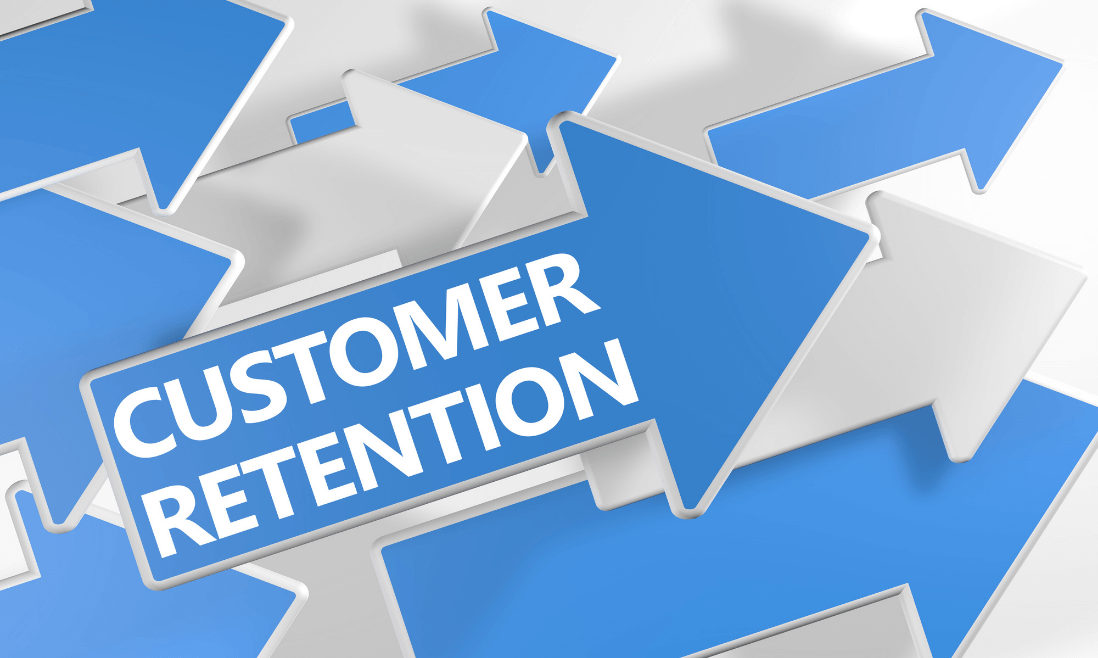Customer retention, the art of keeping customers engaged and loyal, is the cornerstone of long-term success and profitability. By nurturing customer relationships and fostering a sense of loyalty, businesses reap a multitude of benefits, including increased revenue, reduced costs, enhanced brand reputation, and a more engaged workforce.
Unfortunately, customer retention is a complex challenge that many businesses struggle with. This can have a significant impact on a company’s bottom line, as it costs more to acquire a new customer than to retain an existing one.
This blog will explore a variety of customer retention strategies, providing insights and practical tips on how businesses can cultivate enduring customer relationships and achieve sustainable growth. Whether you’re a startup just starting out or a seasoned business looking to improve your retention rate, this blog has something for everyone.
Contents
What is Customer Retention?
Customer retention is the process of keeping existing customers engaged and loyal to a business. It is the opposite of customer churn, which is the loss of customers over time. Customer retention is an important metric for businesses because it directly impacts revenue and profitability.
Why is Customer Retention Important?
Fostering lasting relationships with existing customers is not just a good practice – it’s a strategic imperative. The importance of customer retention cannot be overstated, and here are compelling reasons why it deserves a prime spot in your business strategy:
Cost-Effectiveness

Acquiring new customers comes at a steep price. In fact, it can cost anywhere from 5 to 25 times more than retaining an existing customer. By focusing on customer retention, businesses can optimize their marketing budget and allocate resources more efficiently.
Increased Customer Value
Retained customers are the lifeblood of sustained business growth. Not only do they contribute to consistent revenue streams, but they also tend to spend more over time. What’s more, these loyal patrons often become brand advocates, actively recommending the business to others. This word-of-mouth marketing is a powerful, organic way to expand your customer base.
Feedback Goldmine
Retained customers are more likely to engage in a meaningful dialogue with your business. Their loyalty fosters a sense of trust, making them more inclined to provide valuable feedback. This feedback is a treasure trove for businesses seeking to enhance their products and services. By listening to the insights of retained customers, businesses can fine-tune their offerings and stay ahead in a competitive market.
Overall, customer retention is not merely a checkbox on the business strategy list; it’s a dynamic force that can significantly impact your bottom line. As we delve deeper into customer retention strategies, understanding these fundamental reasons will fortify your commitment to building enduring relationships with your valued clientele.
When Should You Focus on Customer Retention?

While customer acquisition is undoubtedly crucial for the initial growth of a business, it’s equally important to recognize the significance of customer retention, the strategy of maintaining and strengthening relationships with existing customers. Striking the right balance between customer acquisition and retention is essential for achieving sustainable long-term success.
Phase 1: Starting Out
When you’re just starting out, your primary focus should be on acquiring new customers. This is the stage where you’re establishing your brand, building awareness, and attracting initial customers. At this point, the goal is to generate leads, convert them into paying customers, and start building a customer base.
Phase 2: Getting Traction
As you start gaining traction and accumulating a customer base, the focus should gradually shift towards customer retention. This is because retaining existing customers is significantly more cost-effective than acquiring new ones. Moreover, retained customers tend to have a higher lifetime value, making them a more valuable asset to your business.
Phase 3: Consistent Sales
Even as you focus more and more on customer retention, you should still continue to acquire new customers to fuel your business growth. However, the methods you use to acquire new customers should change as you mature. For example, you may want to focus on more targeted marketing campaigns that are specifically designed to attract new customers who are a good fit for your business.
Phase 4: Established
Once you’ve established a solid customer base, it’s time to introduce retention tactics to strengthen those relationships and prevent customer churn. Effective retention taticss include:
- Loyalty Programs: Reward repeat customers with exclusive benefits, discounts, and special perks to incentivize continued patronage.
- Personalized Interactions: Personalize your interactions with customers by tailoring communications, recommendations, and offers based on their individual preferences and purchase history.
- Exceptional Customer Service: Prioritize exceptional customer service by providing prompt, helpful, and empathetic support to foster customer satisfaction and loyalty.
- Regular Feedback Collection: Regularly seek feedback from your customers through surveys, reviews, and social media interactions to identify areas for improvement and address their concerns.
- Nurturing Relationships: The Foundation of Long-Term Success
Phase 5: Well Established

Marketing automation plays a pivotal role in effective customer retention strategies by streamlining repetitive tasks, personalizing customer interactions, and enhancing engagement throughout the customer lifecycle.
When the customer support team is inundated with a surge of inquiries and requests, implementing automation becomes a strategic approach to managing the workload. Automation not only facilitates timely responses but also ensures efficient issue resolution, contributing to an overall positive customer experience.
Customer retention is not just about keeping customers happy; it’s about building long-lasting relationships. By understanding your customers’ needs, preferences, and behaviors, you can anticipate their expectations and deliver experiences that exceed them. This, in turn, fosters loyalty, advocacy, and a customer base that becomes the bedrock of your business’s long-term success.
Top 8 Customer Retention Strategies

In the dynamic world of e-commerce, mastering customer retention is the key to sustained success. Considering these top-notch strategies can elevate your e-commerce store and cultivate lasting relationships with your customers.
1. Adopt customer service tools
Customer Relationship Management (CRM) software, live chat platforms, and chatbots are pivotal tools that empower businesses to deliver consistent, personalized, and timely support. These tools not only streamline customer interactions but also provide a centralized repository for crucial customer data.
By leveraging these tools, businesses can proactively address customer needs, personalize interactions, and foster lasting relationships.
For example, when a customer reaches out for support, the customer service team can access comprehensive information about the customer, such as previous purchases, inquiries, and feedback. Armed with this knowledge, the support team can provide more personalized assistance, addressing the customer’s specific needs and concerns efficiently.
2. Elevate the personalized experience
Providing a personalized experience is crucial for customer satisfaction and retention. This personalized approach enhances user engagement, encourages repeat visits, and ultimately drives business growth.
Optimize the personalized experience within your e-commerce store to improve customer satisfaction and retention. Leverage data to tailor product recommendations, email campaigns, and other customer interactions.
Consider an online fashion retailer that aims to elevate the personalized experience for its customers. When a customer logs in, the website dynamically showcases personalized product recommendations based on their past purchases and browsing patterns. Additionally, the retailer sends targeted email campaigns featuring exclusive discounts on items that align with the customer’s style preferences.
3. Craft a rewards program
Nurture customer loyalty and encourage repeat business by implementing a well-structured rewards program. Rewarding actions like purchases, referrals, and reviews not only provides tangible benefits to customers but also fosters a stronger sense of connection with your brand. This strategic approach can significantly enhance customer retention and drive long-term growth.
Create a rewards program to incentivize customers to make repeat purchases and stay loyal to your brand. Offering rewards for actions like making purchases, referring friends, and writing reviews not only adds value for the customer but also strengthens their connection to your brand.
For example, the rewards program incentivizes customers not only to make purchases but also to make referrals and product reviews. When a customer makes a purchase, they earn points that can be redeemed for discounts on future orders.
4. Apologize when you make mistakes
Foster trust and strengthen customer relationships by acknowledging and apologizing for mistakes with sincerity and responsibility. Transparent communication and a commitment to improvement demonstrate genuine care for customer satisfaction, transforming missteps into opportunities for growth and fostering enduring customer loyalty.
Acknowledging errors, offering sincere apologies, taking responsibility, and implementing preventive measures are essential steps. Customers appreciate transparency and humility, making the apology an influential tool in the arsenal of customer retention strategies. It transforms mistakes into opportunities for growth, demonstrating a commitment to continuous improvement and customer satisfaction.
Consider an online retailer that experiences a technical glitch resulting in order delays and customer frustration. To address the situation effectively, the retailer implements the following strategies: promptly acknowledge the technical issue on the company’s website and social media channels, providing updates and estimated resolution times.
What is more, the retailer can reach out directly to affected customers via email or phone to apologize for the inconvenience and provide personalized updates on their orders.

5. Inspire with a mission
Elevate your brand’s appeal and foster customer loyalty by aligning your actions with a compelling mission and strong values. When businesses demonstrate a commitment to causes that resonate with customers, they create a sense of community and shared purpose, leading to increased engagement, retention, and advocacy.
Companies that articulate a compelling mission and values connect with customers on a deeper level, fostering a sense of community and shared purpose. Businesses looking to enhance customer retention should consider how their mission resonates with their target audience, creating not just transactions but a shared journey toward a meaningful goal.
For instance, a brand is not just focused on selling eco-friendly products but can also be committed to a broader mission of environmental conservation. The company actively engages in initiatives such as tree-planting campaigns, plastic waste reduction programs, and partnerships with environmental organizations.
6. Empower customers with convenience
Convenience stands as a crucial factor for businesses seeking to establish enduring relationships with their client. By prioritizing seamless and accessible experiences, businesses empower customers to navigate their interactions with ease and efficiency.
This approach not only enhances customer satisfaction but also fosters a sense of control and autonomy, leading to increased engagement and loyalty.
Empowering customers with seamless experiences is a cornerstone of customer retention. Businesses achieve this by offering easy-to-navigate websites, self-service options, and multiple communication channels.
For instance, consider an online grocery store that aims to revolutionize the way customers shop for their everyday essentials. The store’s website is designed with intuitive navigation, clear product categorization, and efficient search functionalities, allowing customers to quickly locate the items they seek.
7. Embrace gamification

Beyond mere enjoyment, gamification establishes a unique connection with customers, creating a dynamic and memorable interaction. This innovative approach not only distinguishes your brand but also cultivates a sense of camaraderie, making the customer’s journey more than just a transaction, becoming a captivating and immersive experience.
Take advantage of gamification by incorporating game-like elements such as badges, leaderboards, and rewards. Engaging customers in a fun and interactive manner not only makes the shopping experience enjoyable but also fosters a sense of connection with your brand.
Consider a fitness app that aims to motivate its users to adopt a healthier lifestyle through gamification. Users earn points for completing workouts, tracking their progress, and achieving fitness milestones. These points can be redeemed for badges that represent their accomplishments and encourage continued participation.
8. Maintain consistent social media activity
Elevate your brand’s online presence and foster meaningful connections by maintaining a consistent and engaging social media strategy. By prioritizing regular and meaningful interactions on social media, businesses not only stay relevant but also contribute to the development of a digital community that resonates with the values and identity of the brand.
Be consistently active on social media to connect with customers and strengthen relationships. Sharing updates about products, promotions, and events not only keeps your audience informed but also provides a platform for interactive engagement and support. Consistent social media activity builds a sense of community around your brand.
An example of this might be online bookstores. Maintaining a consistent social media presence is essential to engage with their target audience, showcase their book collections, and cultivate a thriving community of bookworms. Consistent social media posts keep the bookstore top-of-mind among book lovers, increasing brand awareness and recognition within the literary community.
How to Measure Your Customer Retention Rate
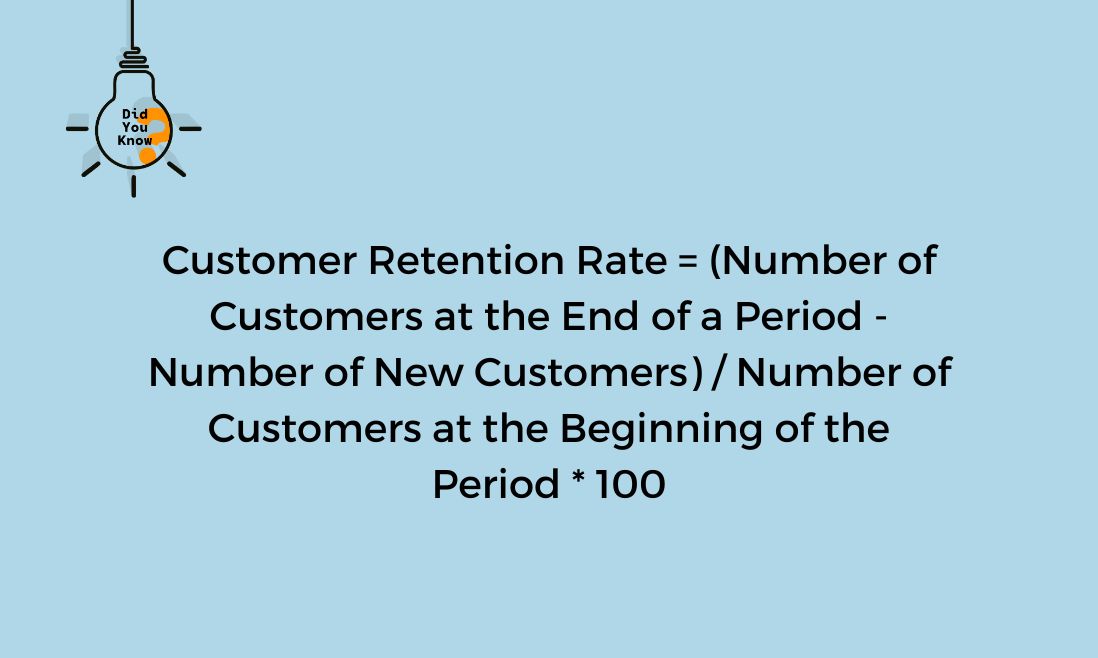
In the pursuit of sustained business success, understanding and measuring your customer retention rate (CRR) is a crucial step. This key metric is calculated using the formula:
Customer Retention Rate = (Number of Customers at the End of a Period – Number of New Customers) / Number of Customers at the Beginning of the Period * 100
For instance, consider a scenario where a company starts with 1,000 customers at the beginning of the month. If 100 customers cease their business engagement during that month, the company’s customer retention rate for that period would be 90%.
Utilizing various tools and methodologies is essential for businesses to gain insights into customer behavior, identify potential churn, and tailor effective retention strategies. Here’s how you can measure your customer retention rate and ensure the sustainability of your customer relationships:
Customer Relationship Management Software
Customer relationship management (CRM) software is a powerful tool that can help businesses track customer interactions, identify trends, and measure CRR. CRM software stores customer data, tracks sales activity, and provides insights into customer behavior.
By analyzing this data, businesses can identify patterns that may indicate churn, such as a decrease in customer engagement or an increase in customer support tickets. Additionally, CRM software can be used to segment customers based on their demographics, purchase history, and other factors, which can help businesses target their retention efforts more effectively.
Web Analytics
Web analytics software can provide valuable insights into customer behavior on a company’s website. By tracking website traffic, page views, and conversion rates, businesses can identify customers who are at risk of churning.
For example, a customer who has not visited the website in several months or who has abandoned their shopping cart multiple times may be at risk of churning. Web analytics software can also be used to measure the effectiveness of marketing campaigns and identify areas where the website can be improved to reduce churn.
Surveys

Surveys can provide direct feedback from customers about their satisfaction with the company’s products, services, and customer service. This feedback can help businesses identify areas where they can improve to reduce churn. Surveys can be conducted online, via email, or in person. Additionally, businesses can use social media to gather feedback from customers.
Combining Tools for a Comprehensive Approach
Businesses can use a combination of these tools to get a comprehensive view of their CRR. By analyzing data from CRM software, web analytics, and surveys, businesses can identify the root causes of churn and develop targeted retention strategies.
In addition to these tools, businesses can also use other methods to measure CRR, such as:
- Calculating the number of lost customers: This can be done by subtracting the number of customers at the end of a period from the number of customers at the beginning of the period.
- Analyzing customer lifetime value (CLV): CLV is a metric that measures the total revenue that a customer is expected to generate over their lifetime. By tracking CLV, businesses can identify customers who are at risk of churning and take steps to retain them.
By using a variety of tools and methods to measure CRR, businesses can get a clear understanding of their customer retention patterns and develop effective strategies to reduce churn and improve profitability.
Real-World Customer Retention Strategies Examples
In this section, let’s explore our list of the practices of successful brands that have some significant success in customer retention strategies that have stood the test of time. What is more, find out how industry giants like Amazon, Starbucks, and Zappos employ these strategies to foster lasting relationships with their customers.
Amazon
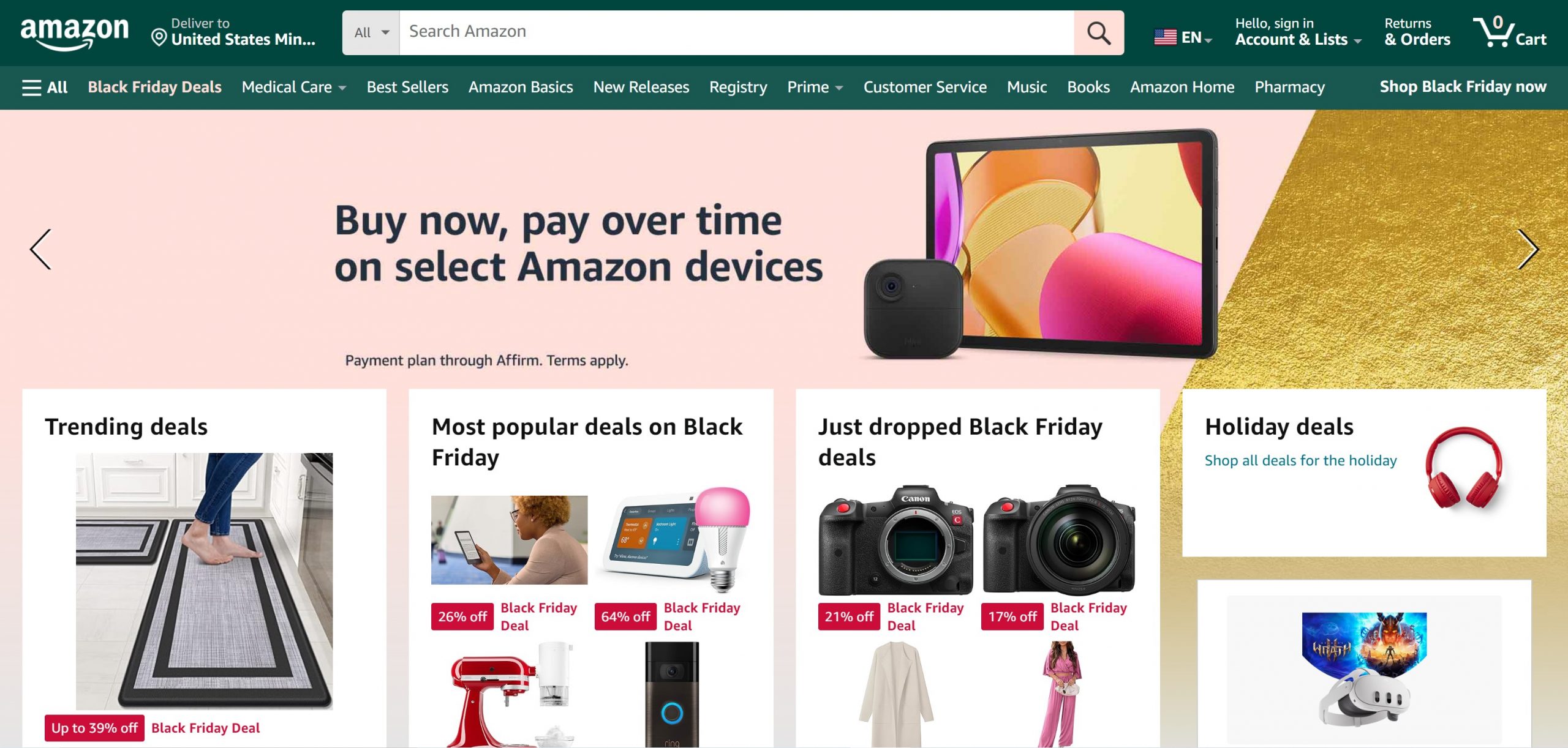
Amazon, an e-commerce juggernaut, implements a range of customer retention strategies, including a robust loyalty program. Amazon Prime, a cornerstone of their strategy, offers members enticing benefits such as free two-day shipping, exclusive deals, and access to Prime Video and Prime Music.
Personalized recommendations based on customer data, the convenience of one-click ordering, and a suite of subscription services like Amazon Prime further solidify Amazon’s position in customers’ lives, encouraging ongoing engagement.
Provided by Statista, in the first quarter of 2023, Amazon Prime had a 30-day trial after which 72 percent of users subscribed to the service. Moreover, 97 percent of Amazon Prime members renewed their membership for a year, and 99 percent renewed it for a second year over the first three months of 2023.
In addition to these strategies, Amazon consistently innovates its customer engagement tactics. The integration of voice-activated shopping with devices like Amazon Echo and the utilization of artificial intelligence to anticipate customer needs showcase the company’s commitment to staying at the forefront of customer-centric innovation.
Starbucks
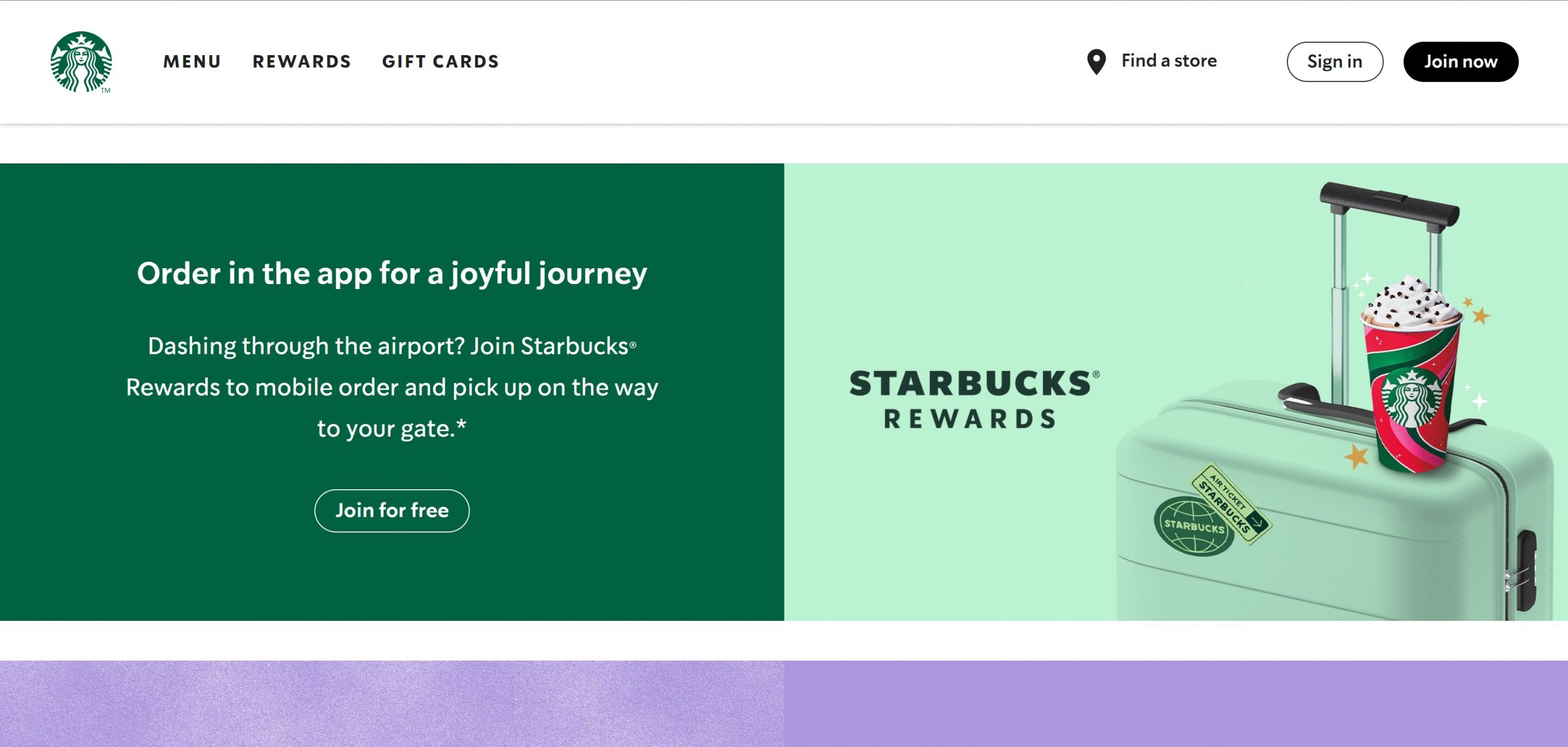
Starbucks, renowned for its coffee culture, prioritizes customer retention through a well-crafted loyalty program. Starbucks Rewards members earn stars for every purchase, redeemable for free drinks and food. The integration of mobile ordering and payment options simplifies the customer experience, saving time and enhancing convenience.
Followed by Pymnts, Starbucks Rewards has nearly 31 million active members. What is more, Starbucks has a higher customer retention rate of 44% than the industry average of 25%.
Starbucks leverages customer data to personalize rewards, creating a tailored experience. Additionally, the brand fosters a sense of community by sponsoring events, hosting gatherings, and providing free Wi-Fi in stores, contributing to a holistic customer experience.
In an era of digitalization, Starbucks continues to embrace technological advancements, experimenting with features like augmented reality to engage customers in innovative and interactive ways.
Zappos
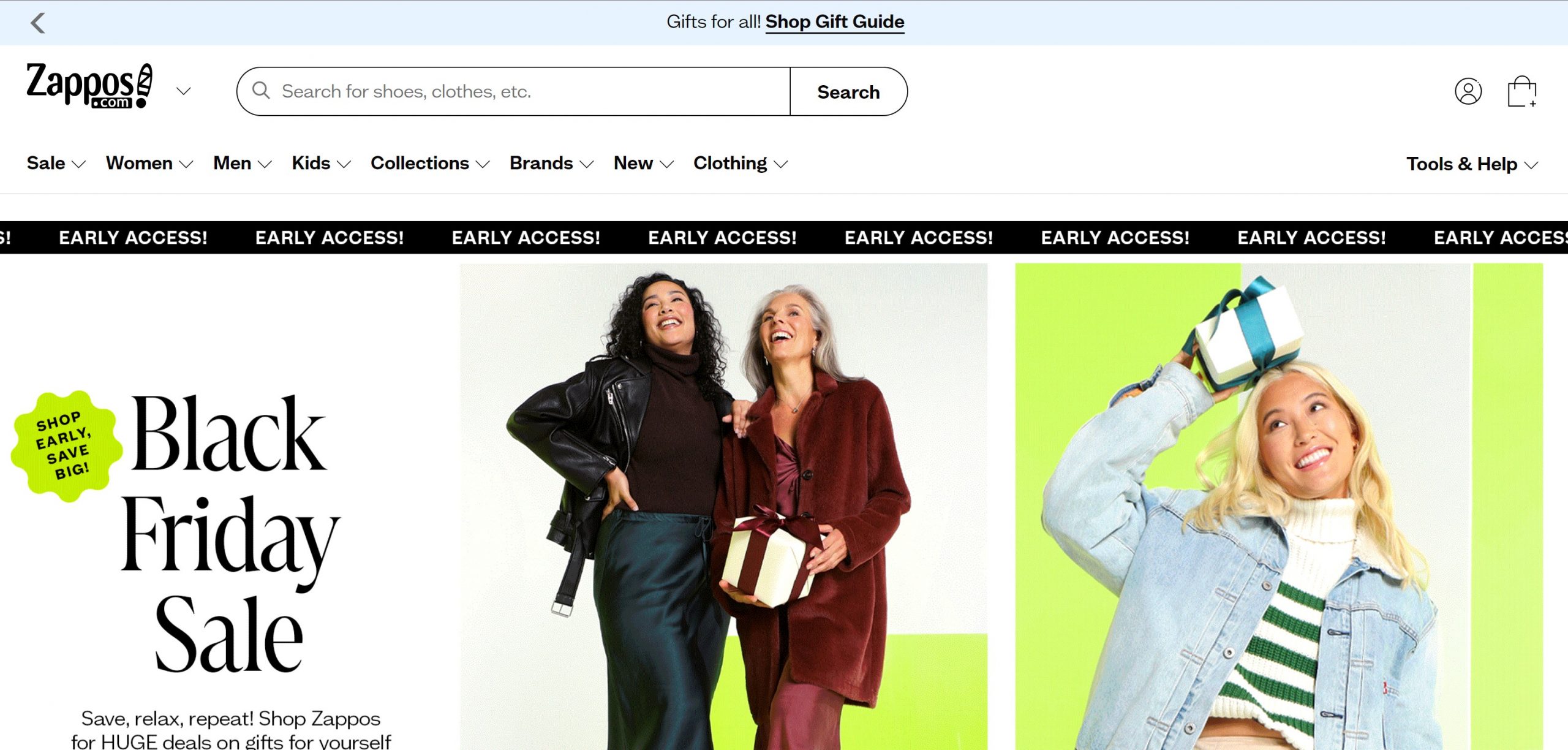
Zappos, a trailblazer in online retail, has carved a niche with its customer-centric approach. Offering free shipping and returns on all orders, Zappos eliminates the risk associated with online shopping. The brand’s outstanding customer service, characterized by friendliness and a willingness to go the extra mile, enhances customer satisfaction.
Provided by Calix, Zappos gets 75 percent of its orders from existing customers and continues to drive customer engagement, loyalty, and referrals through its superior customer support.
A remarkable 365-day return policy gives customers ample time to evaluate their purchases. Zappos adds a personal touch by sending handwritten thank-you notes to new customers and those who make significant purchases, creating a sense of appreciation and connection.
Going beyond transactional interactions, Zappos consistently invests in employee training programs to ensure that the company’s culture of exceptional service permeates every customer touchpoint.
These examples illustrate that customer retention strategies encompass a diverse array of initiatives, from loyalty programs to personalized experiences and exceptional service. By drawing inspiration from these industry leaders, businesses can tailor their own customer retention strategies, fostering enduring connections with their clientele.
Frequently Asked Questions
1. How do you keep clients coming back?
To keep clients coming back, focus on delivering exceptional service that exceeds their expectations, maintaining regular, personalized communication, and actively seeking their feedback to show you value their input.
Implementing loyalty programs and staying updated with industry trends can also be beneficial. It’s crucial to address any issues promptly and effectively, ensuring your clients feel heard and valued. By consistently providing high-quality service and demonstrating genuine care for your clients’ needs and preferences, you can foster lasting relationships and encourage repeat business.
2. How do companies improve customer retention?
Companies improve customer retention by providing exceptional service and high-quality products, personalizing customer experiences, and actively responding to feedback. Loyalty programs and consistent, meaningful communication also play a crucial role. Addressing problems swiftly and effectively, adding value through educational content or advice, and fostering a sense of community around the brand can deepen customer relationships as well.
3. What is an example of customer retention?
An example of customer retention can be seen in the approach of a coffee shop that uses a loyalty program. Imagine a coffee shop that offers a loyalty card where a customer gets a free coffee after purchasing ten. This not only incentivizes repeat purchases but also creates a sense of reward for continued patronage.
Additionally, suppose the coffee shop remembers regular customers’ orders, greeting them by name and asking if they’d like “the usual.” This personal touch makes customers feel valued and appreciated. The coffee shop might also solicit feedback on new flavors or offer special discounts to frequent customers. By combining tangible rewards (the free coffee) with personalized service and engagement, the coffee shop effectively encourages its customers to return, thereby retaining them.

